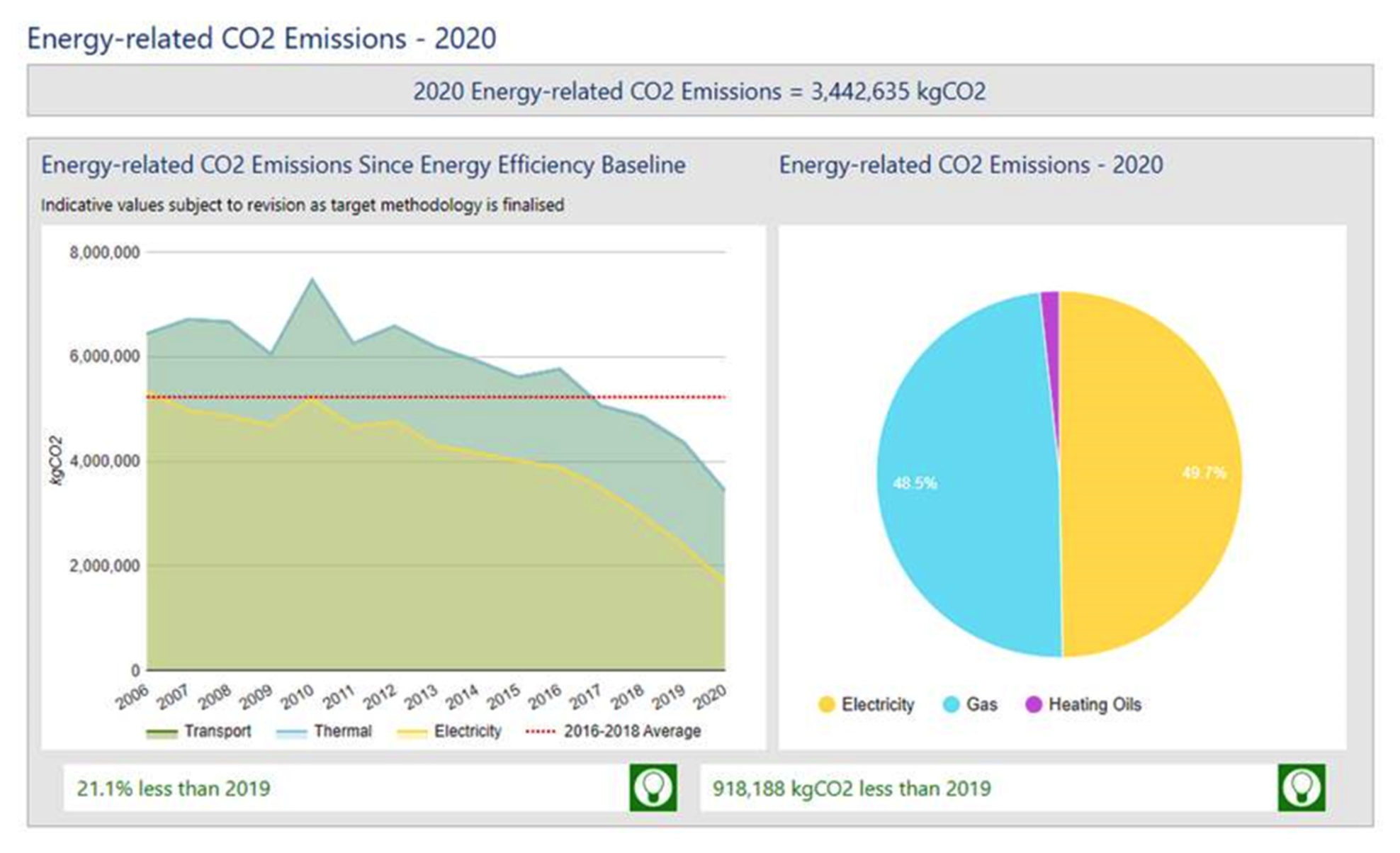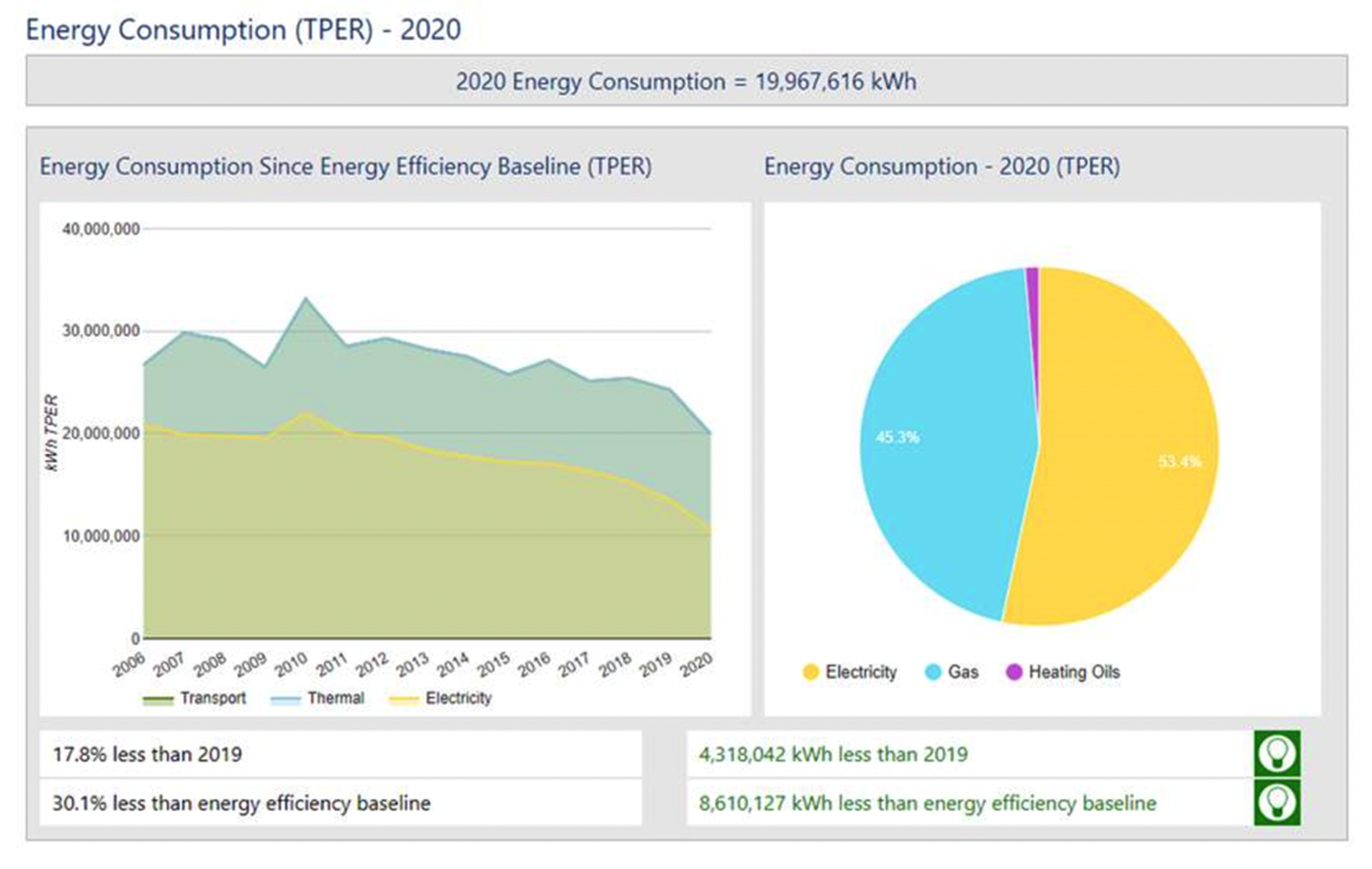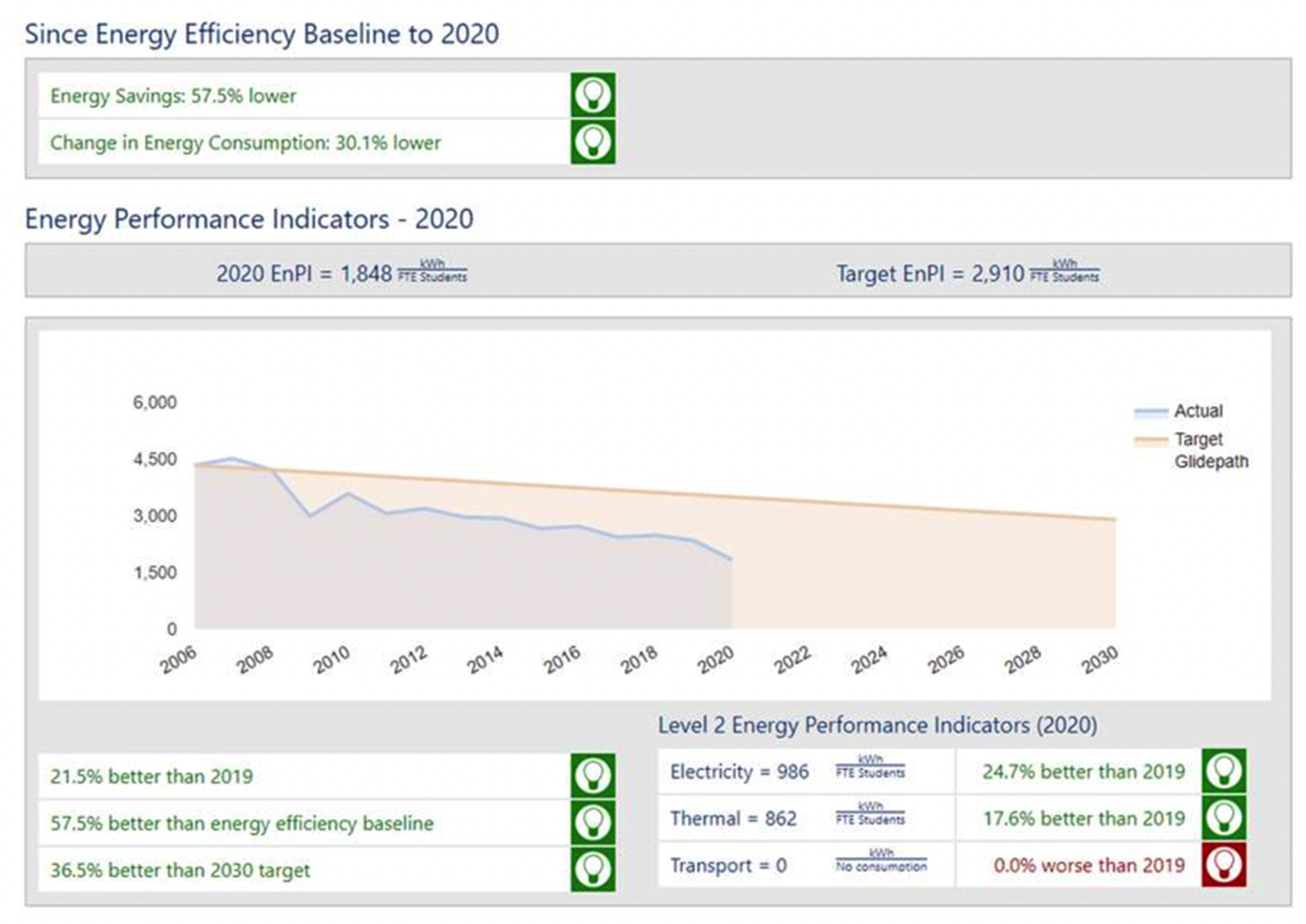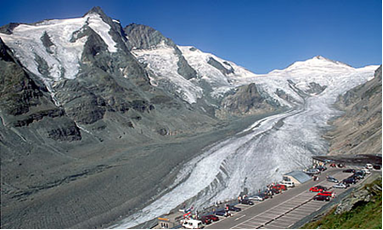Energy General Introduction:
The focus in our time is on how the fossil fuels of our planet will someday run out and the easy access to these fuels dry up. We will have to focus on extracting fuels from more inaccessible locations. This will have an adverse effect on the cost of fossil fuels going forward. The other major concern is the damage that we are currently causing to our atmosphere, which will be irreversible if we keep emitting the harmful by products of current energy generation, for example carbon dioxide. These gases are collecting and being trapped over our polar regions and are beginning to affect the overall climate. The latest round of the Kyoto Agreement was agreed as a legislative and combined measure to tackle the root cause by the major developed countries of the world in December 1997.One hundred and sixty nations signed up to the agreement. Each of the participating developed countries must decide how to meet its respective reduction goal during a five-year period (2008-2012).
This is the beginning of what will be a total change in direction as to how we generate energy. With the focus on the use of technologies that reverse the current trend of total climate change. Figure 1 shows how climate has increased steadily over the last 150 years. The trending has taken a sharp increase over the last few decades highlighting the danger of the earth overheating. The use of alternate energies will be our greatest challenge over the coming decades. Already Ireland is falling behind in the race to stabilise our planets climate, while some of our fellow member European states have made significant inroads in the implementing of these new Generation technologies. Global Warming Example of a Retreating Glazier below.
The traditional approach to energy usage is that of an overhead cost. The bill is expected, it arrives and gets paid. Efforts are then made to reduce the usage and thus reduce the overhead. This cycle would have continued indefinitely unless a proper systematic approach to energy management was introduced. The initial step back in 2008 was in compiling our historical energy footprint going back over the previous few years. On completion of this exercise a full energy report was generated and issued to the Cork Institute Technology senior management at the time. This base line energy data was used to highlight which energy years will be chosen by the MTU with approval from the SEAI to be our Base Line and starting point on the energy road map going forward.

The original Cork Institute of Technology (now MTU) 2020 target uses various energy in a variety of areas throughout the Bishopstown Campus. The main goal of this Initial plan was firstly to evaluate areas of energy consumption, to establish where there is waste and implement a plan to reduce this wasted energy with the overall goal of reducing the Institutes Energy consumption by 33% as per the public sector commitments. The new targets facing the Public Sector have been declared for the year 2030. We must now engage and under the new umbrella of the Munster Technological University work together to reach these targets.
The SEAI Public Sector Partnership Program:
SEAI Partnership programme helps public sector bodies to save money, improve the environment and meet national obligations by making significant reductions in their energy usage. The programme engages at the top level within organisations and provides tailored support delivered in partnership with those organisations who demonstrate commitment to strategic energy management.
We surpassed our initial Public Sector 2020 target, to improve energy efficiency by 33%. Our final achievement on this 2020 goal was 57.5% improvement. Through the strong, committed actions of our Green Energy Team, we have demonstrated was possible by all sectors.

I.S. 393:2005 is the Technical Guideline that the Sustainable Energy Ireland introduced on introducing an ‘Energy Management System’. We gained the ISO 50001 accreditation under the CIT banner in 2015.
Partnership offers a clear roadmap, with actions, for achieving targeted energy savings. Our support will systematically guide you to develop, execute and maintain energy reduction plans. SEAI provides Partnership support through three core strands:
- Exemplar energy management, including training;
- Strategy & planning for success;
- Facility energy assessments.
- Identify and understand your organisation’s needs with respect to improving its energy management practices;
- Manage, coordinate, and target the provision of SEAI Partnership supports for your organisation;
- Provide ad hoc support with an emphasis on high level engagement to ensure that organisational structures are in place to deliver long term savings
- Report on your organisation’s progress to SEAI.
The Office of Public Works (OPW) – Optimising Power @ Work Partnership Program:
The Office of Public Works (OPW) has one of the largest and most diverse property portfolios in Ireland, including Government offices, Garda stations and historic buildings such as Dublin Castle and the Customs House.
The OPW has been running a state-wide staff energy conservation campaign, entitled Optimising Power @ Work, in Central Government buildings since 2008. The core principle of Optimising Power @ Work is to intensively work with staff to encourage behavioural change about energy usage, with the overall aim of identifying and eliminating energy wastage.
The programme in the Central Government buildings has achieved average annual savings of 25% across 300 participating buildings, making it the largest and most successful campaign of its kind in Ireland.
The CIT and now the MTU – Cork has partnered with the OPW since 2014 and has benefited in Energy Awareness Campaign support as well as ongoing mentoring support form an assigned Project Support energy engineer. The OPW have recently sponsored a Sub-Metering Upgrade and has committed to ongoing support as long as they receive government funding & support for this program.
Optimising Power @ Work uses three key elements to support buildings and energy teams in reaching their energy reduction targets:
1. Technology – Dedicated Energy Monitoring Systems (EMS) record energy consumption data in each building.
2. Specialist Expertise – An OP@W Energy Advisor is appointed to each building. The Energy Advisor assesses the historic energy performance of the facility and sets energy saving targets for the building. The performance of the building is measured against these targets, via the online EMS, and monthly progress reports. The Energy Advisor offers an insight into where energy savings may be achieved, through no or low-cost measures.
3. Staff Engagement – An active energy team is established in each building comprising key stakeholders from different business functions within the organisation. The OP@W Energy Advisor intensively engages with the energy team and staff in the building on a continuous basis to identify energy saving opportunities.
MTU Energy Management Goals:
- Develop and implement a structured Energy Management Programme.
- Adopt energy efficient procurement practices.
- Establish and implement an annual action plan to deliver energy savings in the short term.
- Identify and implement strategic initiatives to work towards the 2020 target.
- Review and reassess the Energy Management Programme annually.
- Reporting annually on energy efficiency initiatives and savings made.
- Share information on progress with SEAI.
MTU Energy Management Benefits:
- Good for the environment – climate change is real and energy management is a highly cost-effective means to reduce greenhouse gas emissions.
- Improved public image – the public increasingly demand greater sustainability from government and commercial organisations. Reduce your carbon footprint to demonstrate you are tackling one of the major issues that confronts us today.
- Future proof your operations – the rising costs of energy, the insecurity of energy supplies, and increasing environmental legislation means that organisations are vulnerable to external changes. Adopt sustainable practices now and minimise the impact of future changes on your operations and prepare for regulatory change.
- Enable public bodies to track their energy consumption, their energy performance, and their progress towards the 2020 target;
- Add value for public body users by enabling them to better understand energy consumption, target areas for improvement, identify opportunities, review progress, monitor & benchmark performance and validate savings;
- Use a baseline period of 2001-2005, but will accommodate other baselines in the absence of this data;
- Accommodate the reporting of electricity, thermal and fleet consumption;
- Access energy consumption data for electricity and natural gas directly from the databases operated by the regulated meter operators;
- Link to, and insofar as is possible, integrate with, other existing reporting systems, including the Change.ie Carbon Management Tool;
- Incorporate a methodology for calculating energy savings that is easily understood, workable and robust, that can accommodate new entrants and which can capture changes in activity over time.
MTU 2030 Energy Reduction Plan (Summary):
Part 1: Commit & MTU Actions
Step 1: Senior Management Commitment. Senior Management to sign up to an energy reduction charter.
Step 2: Appointment of a Senior Manager to the MTU Energy Reduction Programme. The appointment of a Senior manager to Head/Mentor the Energy Reduction programme.
Step 3: Appointment of Energy Manager / Energy Reduction Coordinator. The Appointment of an Energy Champion to head the reduction program
Step 4: Establish Departmental Energy Reduction Team.
Step 5: Energy & Environmental Policy statement signed by the President
Part 2 Identify
Step 6: Develop & overview total energy consumption with the introduction of an Energy Sub-Metering System. This Item is Ongoing and the Buildings & Estates office has been closely monitoring all energy usage across the Bishopstown Campus. We will be issuing quarterly reports highlighting energy usage and trends.
Step 7: Survey Energy Use & Identify significant Energy users.
Step 8: Identify Key areas that Influence energy consumption & energy performance indicators.
Step 9: Identify Energy saving opportunities. Building & Estates Existing & Future Projects.
Part 3 Plan
Step 10: Set Objectives & Targets
Step 11: Establish Program Plan. Energy Manager to agree work with SEAI and MTU Energy Team in agreement on future MTU Energy Management structure.
Step 12: Formally allocate sufficient human, financial and System resources. The ongoing costing of various agreed projects and Energy Plan items.
Part 4 Taking Action
Step 13: Implement the Action Plan
Step 14: Promote Energy Efficiency awareness & practices amongst staff, students, and ancillary staff. Energy Awareness Campaign in operation since 2015.
Identifying energy waste and good energy saving ideas will come from the staff and students who deal with equipment and building services in their respective departments The Energy Awareness Programme will try and tap into this resource by getting the staff and students involved in looking out for energy waste, e.g., through suggestion schemes, incentive programmes or waste detection programmes.
Step 15: Train Key personnel in Key areas in energy efficient practices. Create Energy Reduction Team training program. Training to include the following,
1) Measurement & Verification Techniques.
2) Energy Auditing Methods.
3) Energy Reporting Methods.
4) Electrical & Mechanical Energy Users in the CIT.
Step 16: Operate, maintain & purchase & design significant energy users efficiently. Create Standard Operating Procedures that will demonstrate and train all MTU staff and Students the Green Procurement and Green Design. Ensure that all Electrical, Mechanical systems are operating at their optimum efficiency throughout the campus.
Step 5 Review
Step 17: Continuously measure & monitor energy performance &check against targets. Create monitoring system that will track the progress of the system as regards achieving the energy reduction.
Step 18: Identify & implement corrective and preventative actions. Take corrective action if required to bring the energy plan back on track. Create a reporting system that will highlight required improvement steps to all staff and students concerned. Review all changes to the system to ensure that changes to the energy plan have been effective.
Step 19: Periodically review Energy Management system and identify improvements.
Ensure that system is working on a quarterly basis (Every 3 months). This review can be spread out to accommodate different MTU sites.
– Schedule and plan the review / Identify priority topics / Gather background information
– Conduct the review and collect the information
Step 20: Management review of Energy Management system. The Senior Management Review should address the suitability, adequacy and effectiveness of the whole MTU Energy Reduction Plan:
Building & Estates Energy Projects to Date:
- Installation of the Main Campus Sub-Metering System. (Ongoing)
- Focus on Various Energy Reduction LED Lighting Upgrade Projects. (Ongoing)
- Introduction of Smart Timers. Timers currently control Electrical storage heaters, Toilet Water Heaters, Vending machines, Computer Lab small power circuits.
- 2GM Boiler Optimisers Installed in main Boiler House.
- Retrofit of Air Conditioning units in F Block. Using more energy efficient Air Conditioning Units. AC Units are now controlled with control system in the buildings office, Elimination programme for R22 refrigerant.
- Introduction of Combined Heat & Power units on the Bishopstown MTU campus.
- Main Boiler House (Blocks A-D) = 315KwE + 400 KwT / Tourism & Hospitality Boiler House = 115KwE +180 KwT / Nimbus Boiler House = 50 KwE + 80 KwT
- Project to heat the main canteen Direct Hot Water with CHP over summer months to improve on the payback efficiency.
- Controlling and regulating the building environments via the BMS.
- Ongoing – Air-conditioning (AC) and Air Handling Unit (AHU) upgrade.
- Ongoing upgrade existing motors and pumps across the campus and plan to replace with more efficient & Smart Technologies.
- Air Compressors across the campus are not controlled and therefore are not efficiently maintained. It is proposed that these units are handed over to the Building & Estates to control. By retrofitting existing compressors with Variable Speed Drives, savings of up to 35 % can be realised.
- Air Conditioning units also need to be controlled centrally. By ensuring that all AC units are serviced and turned off at times of low occupation can have potential savings of 30 – 40 % on existing running costs.
- Install Voltage Optimizers. Potential savings of 10 – 15 % on suitable Distribution boards across the campus.
- Ensuring that existing Building Services systems are running efficiently. Heating / Extract /Air Handling Systems.
- Working with the IT Department to control all computer / printer equipment.
- Feasibility study is underway regarding a Solar Installations in the GYM and G Block Showers.
- District heating Thermal Store for Blocks A-D.
Ongoing Campus Wide Projects:
1) Green Procurement
2) Energy & Green Efficient design in all CIT projects.
3) Training the Team. Measurement & Verification
4) Energy Audits.
5) Energy Monitoring / Usage & Control
6) Achieving the Global Energy Standard ISO50001 for the Combined MTU
7) Continuing Energy / Green Environmental Awareness Campaign.

